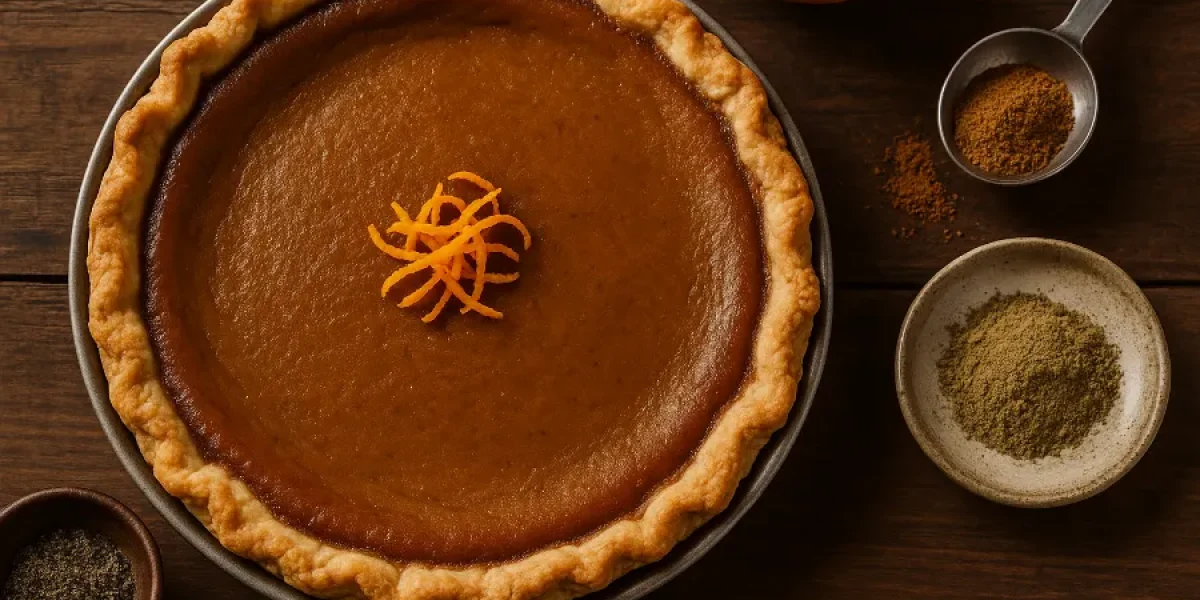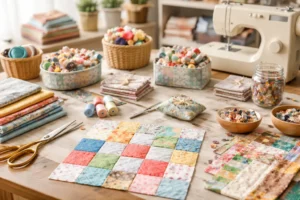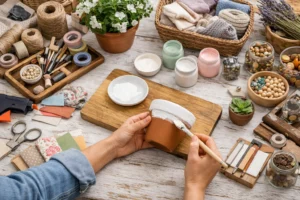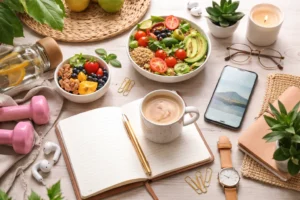If you’ve ever looked into your mixing bowl and thought, “Oh no, my pumpkin pie filling looks too watery,” you’re not alone. Every fall, I go through this same panic that moment when the custard seems too thin, the puree too loose, and I start wondering if my Thanksgiving dessert will collapse before it even sets. But over the years (and many pies later), I’ve mastered how to fix watery pumpkin pie filling, make it luscious and rich, and even elevate it with pie spices and chef-level baking tricks that make it taste like something straight out of a professional kitchen.
This post will walk you through every step from thickening techniques to blind baking your pie crust, adding a splash of bourbon, and even exploring non-pumpkin alternatives that never go soggy.
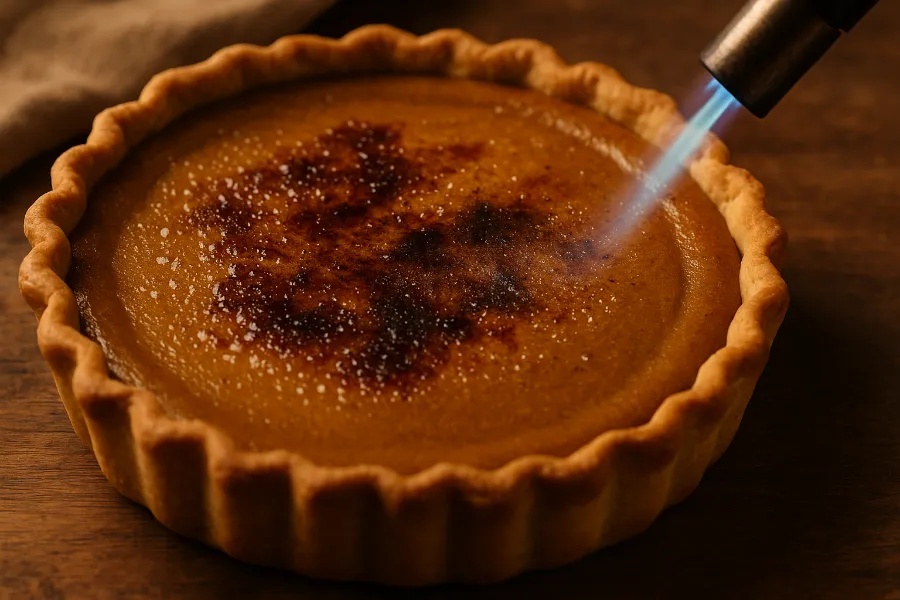
Pumpkin Pie Custard: The Science of Perfect Texture
Here’s the secret most home bakers miss — pumpkin pie is actually a custard pie.
That means the texture depends entirely on the balance between liquid (milk or cream), protein (eggs), and heat. If your ratio is off, the pie won’t set properly, and that’s where the “too watery” disaster begins.
A perfect pumpkin pie custard should be smooth, thick enough to coat the back of a spoon, and pourable but not runny.
If it’s thinner than heavy cream before baking, you’ll want to tighten it up before it goes in the oven.
My go-to thickening fixes:
- Simmer the purée: Cook your pumpkin puree on the stove for 5–7 minutes to evaporate extra water.
- Add starch: Mix in 1–2 teaspoons of cornstarch or 1 teaspoon of tapioca starch.
- Add an extra egg yolk: Yolks add richness and structure, helping the custard set firmly.
- Chill before baking: Let the mixture rest for 30 minutes in the fridge. It thickens naturally as starches hydrate.
Once you’ve done that, you’re halfway to a silky, slice-perfect pie.
Pumpkin Pie Baking: Low and Slow Always Wins
When it comes to pumpkin pie baking, patience is your best friend.
A custard pie doesn’t want blazing heat — it needs gentle baking that slowly sets the eggs and cream without curdling.
I bake my pies at 325°F (163°C) on the middle rack.
Any higher and you risk the dreaded watery ring (where the custard splits from overbaking).
Baking tips that changed my life:
- Bake until the edges are set but the center jiggles slightly when nudged.
- Use an instant-read thermometer — pull the pie at 175°F in the center.
- Cool the pie completely before slicing. The custard keeps firming as it cools.
- Never skip chilling overnight — the flavor and texture both deepen beautifully.
Pie Crust: Your First Defense Against Soggy Bottoms
The crust makes or breaks a custard pie.
You could have the perfect filling, but if the crust gets soggy, all that work is lost.
A flaky, crisp crust isn’t magic — it’s technique. The key is temperature, fat, and pre-baking.
My fail-proof pie crust formula:
- 2 ½ cups all-purpose flour
- 1 tsp salt
- 1 tbsp sugar
- 1 cup cold unsalted butter, cubed
- 6 tbsp ice water
Pulse everything in a food processor until crumbly, press into a disk, wrap, and chill for at least 30 minutes.
Cold butter = flaky layers. Always.
Before you add your custard, you’ll want to blind bake the crust.
How to Blind Bake Pie Crust (The Real Secret to No Soggy Bottoms)
Blind baking means pre-baking your crust before adding the filling — and it’s absolutely essential for wet fillings like pumpkin, butternut squash, or sweet potato.
Here’s how to blind bake pie crust the right way:
- Roll out your dough and fit it into your pie pan.
- Freeze it for 15–20 minutes (this prevents shrinkage).
- Line with parchment paper and fill with pie weights or dried beans.
- Bake at 375°F for 15 minutes.
- Remove weights and parchment, then bake for another 10 minutes until golden.
- For extra insurance, brush with egg white and bake 5 more minutes.
The result? A crisp, golden crust that stays buttery and firm even under rich custard.
Pie Spices: The Heart of Pumpkin Pie Flavor
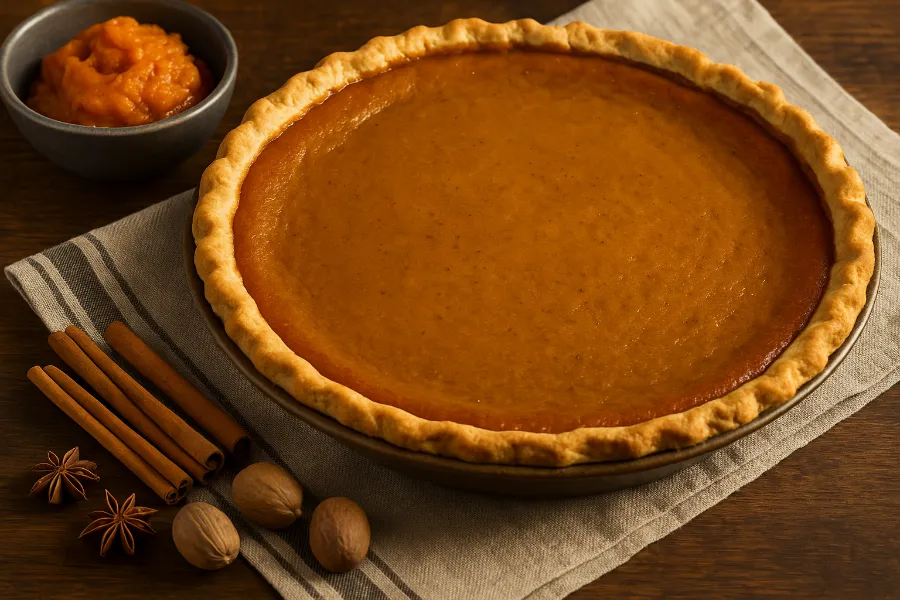
Now for the fun part — pie spices. This is where you can take your pumpkin pie from “standard Thanksgiving” to “who made this masterpiece?”
I’ve tested countless combinations, and here’s what I’ve learned: cinnamon may lead, but it’s the supporting spices that create depth.
Classic Pumpkin Spice Blend
- 1 ½ tsp cinnamon
- ½ tsp ginger
- ¼ tsp nutmeg
- ¼ tsp cloves
Elevated Gourmet Blend
- ⅛ tsp cardamom (floral, sophisticated note)
- Zest of one orange
- ½ tsp allspice
- Tiny pinch of black pepper (it sharpens the sweetness beautifully)
If you really want to level up, bloom your spices in melted butter or warm cream before adding them to the custard. The heat activates their essential oils, unlocking bold, rounded flavor.
Custard Pie Techniques: From Homey to High-End
The best pies even at Michelin-star level follow the same principle: respect the custard.
Here are a few of my favorite custard pie tricks that make all the difference:
- Strain the filling before pouring it into the crust. This removes any pumpkin fibers and makes the texture silky-smooth.
- Bake with a water bath. Place your pie pan inside a larger pan and fill it with 1 inch of hot water. The steam keeps the temperature steady, preventing cracks or curdling.
- Brown the butter for your filling. It adds nutty, toasted depth that makes your pie taste luxurious.
It’s incredible how these small adjustments take your pie from rustic to refined.
Pumpkin Pie with Bourbon: A Grown-Up Upgrade
Now, if you really want to impress your guests, try a pumpkin pie with bourbon.
It’s still the same cozy classic — but with a sophisticated edge. Bourbon enhances pumpkin’s natural sweetness while layering in notes of caramel, oak, and vanilla.
How I do it:
- Add 1–2 tablespoons of bourbon to your filling.
- Pair it with brown butter and orange zest for balance.
- Sprinkle a bit of raw sugar on top before baking for a subtle crunch.
It smells like heaven, tastes like fall, and makes even traditionalists say, “Wait, this is pumpkin pie?”
Sweet Potato Pie vs Pumpkin Pie: The Cozy Rivalry
Every Thanksgiving, there’s a quiet debate happening in kitchens across the country: sweet potato pie vs pumpkin pie. I used to be firmly in the pumpkin camp — until I baked my first sweet potato version.
Sweet potato pie has a naturally denser, creamier texture with deep caramel undertones. It’s almost foolproof because sweet potatoes contain less moisture than pumpkin. That means fewer “too watery” moments and a perfectly set custard every time.
Flavor profile:
- Earthy sweetness
- Silky texture
- Pairs beautifully with brown sugar and nutmeg
For a Southern-inspired twist, try adding a maple pecan crumble topping — it’s pure comfort.
So, if your pumpkin puree gives you trouble this year, sweet potato is your safest (and most delicious) backup.
Butternut Squash Pie Recipe: My Favorite Pumpkin Alternative
If you want something unexpected but absolutely divine, make a butternut squash pie.
It’s lighter in flavor than pumpkin, naturally buttery, and incredibly smooth.
Here’s my simple butternut squash pie recipe:
Ingredients:
- 2 cups roasted butternut squash puree
- 3 large eggs
- ¾ cup brown sugar
- 1 cup heavy cream
- 1 tsp cinnamon
- ½ tsp cardamom
- Pinch of salt
Instructions:
- Roast your squash cubes until caramelized.
- Purée and strain them for a silky base.
- Combine with remaining ingredients and whisk gently.
- Pour into a blind-baked crust and bake at 325°F for about 50 minutes.
This pie is elegant, naturally sweet, and holds its shape beautifully — no watery filling, ever.
Bonus: High-End Pumpkin Pie Techniques to Try
If you’ve mastered the basics and want to feel like a pastry chef, try these restaurant-style upgrades:
- Pumpkin Sabayon Pie: Whisk egg yolks, sugar, and brown butter over gentle heat to create a light, mousse-like filling.
- Almond Pâte Sucrée Crust: Swap regular crust for almond-flour pastry. Adds nutty fragrance and stays crisp.
- Brûléed Sugar Topping: Once cooled, sprinkle sugar on top and torch it until golden. Instant crème brûlée vibes.
- Pumpkin Mousse Tart: Layer pumpkin custard with whipped caramel mousse and a glossy mirror glaze.
They take more time, but if you’re chasing that “showstopper” dessert, these are your ticket.
Why Pumpkin Pie Filling Gets Watery (and How to Prevent It Next Time)
To wrap it up, here’s the short version of why pumpkin pie filling gets watery in the first place:
- Too much moisture in the pumpkin puree
- Not enough eggs to bind the custard
- Overmixed filling (introduces air)
- Baking at too high a temperature
- Skipping blind baking the crust
Next time, fix all that with one simple plan: dry the puree, balance the eggs, bake low and slow, and always blind bake.
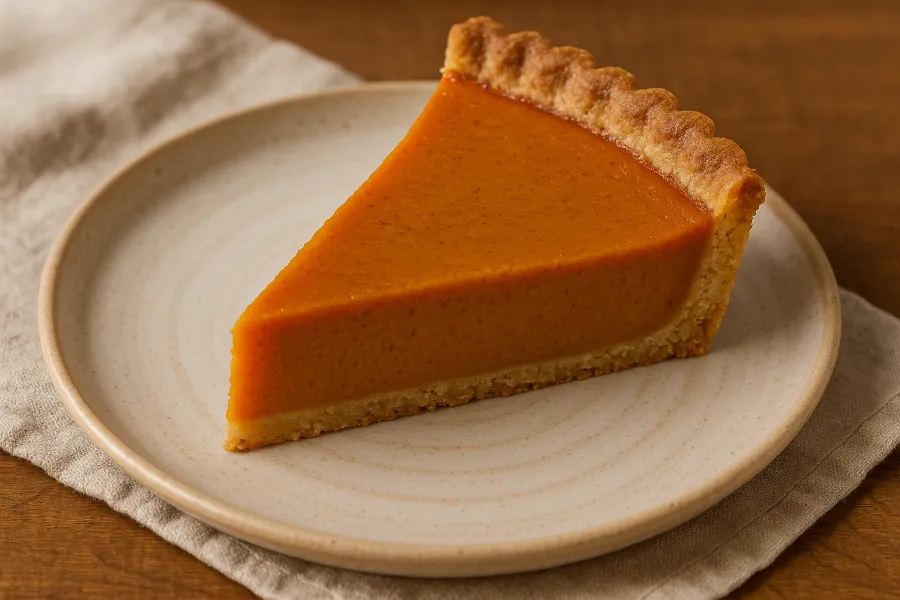
Final Thoughts: From Watery to Wonderful
The first time my pumpkin pie filling was too watery, I nearly cried.
Now? It’s just part of my baking rhythm — a quick adjustment on the way to dessert perfection.
With the right spices, the right techniques, and maybe even a splash of bourbon, you can transform a potential disaster into something truly bakery-worthy.
Whether you go classic, high-end, or branch out into sweet potato or butternut squash pie, remember — the best pies aren’t just baked. They’re learned, loved, and shared.
So if your next pumpkin pie starts off watery, smile.
You’re about to make your best one yet.
FAQs
It’s usually because the pumpkin puree has too much moisture. Cook it down on the stove for a few minutes or add a bit of cornstarch or an extra egg yolk to thicken it before baking.
Chill it overnight — the custard often sets as it cools. If it’s still too soft, serve it cold as a pumpkin custard parfait with whipped cream.
Always blind bake your crust before adding the filling. Brushing it with egg white and baking a few extra minutes creates a moisture barrier.
A classic mix of cinnamon, ginger, nutmeg, and cloves is timeless. For a gourmet twist, add cardamom, allspice, and a hint of orange zest.
Bake at 325°F–350°F until the center reaches about 175°F. The filling should wobble slightly when you gently shake the pie.
Yes! A tablespoon or two of bourbon enhances pumpkin’s sweetness and adds caramel and vanilla notes for a more sophisticated flavor.
Sweet potato, butternut squash, or kabocha squash make delicious substitutes. They’re naturally thicker and less watery than pumpkin.

